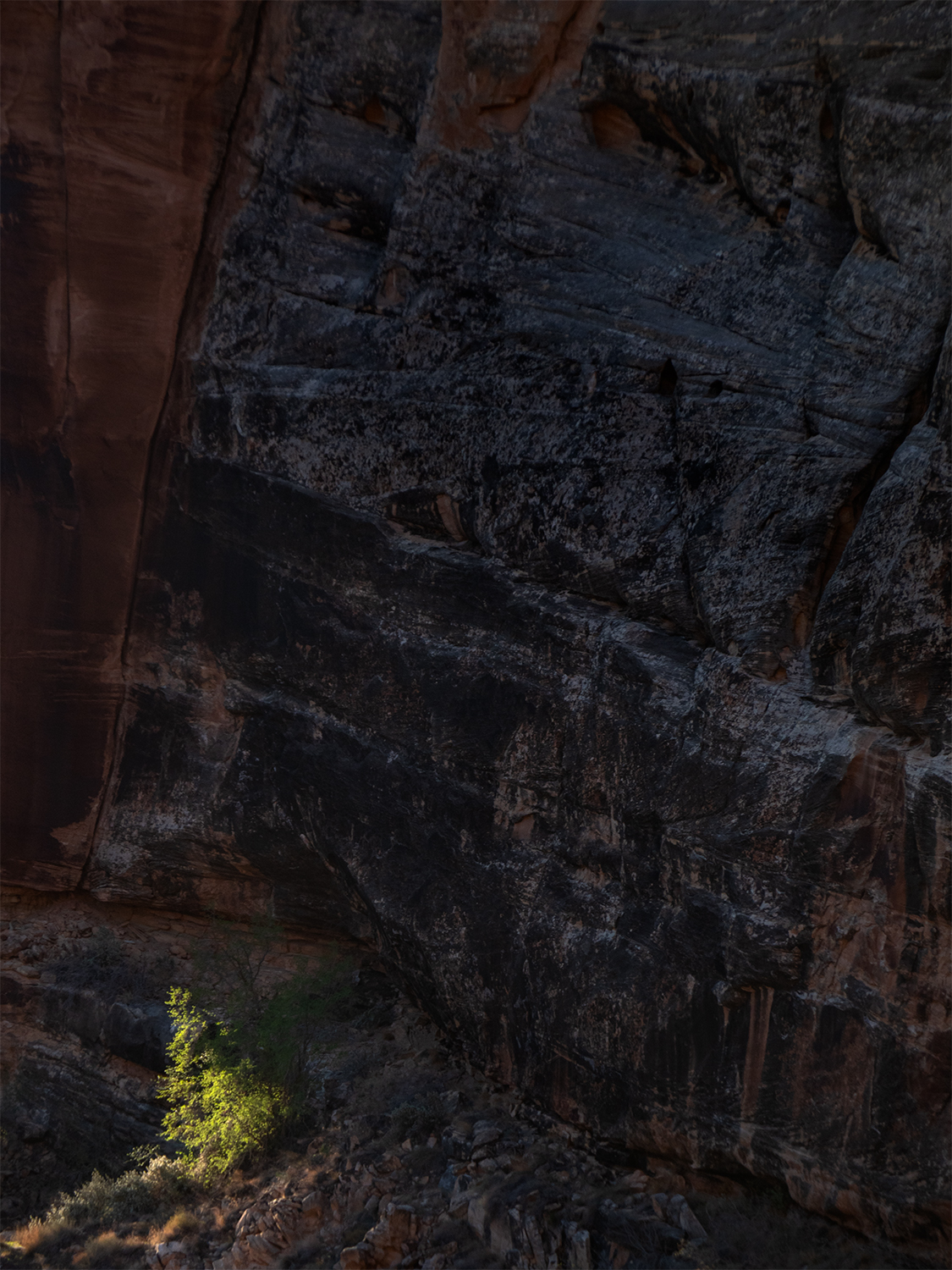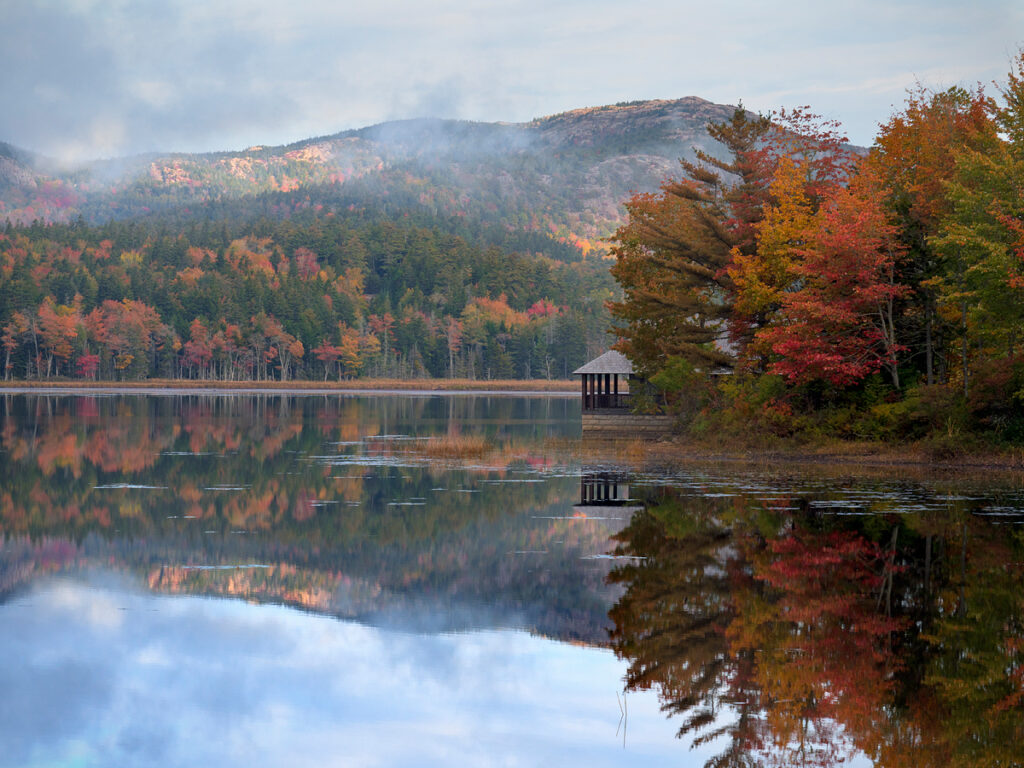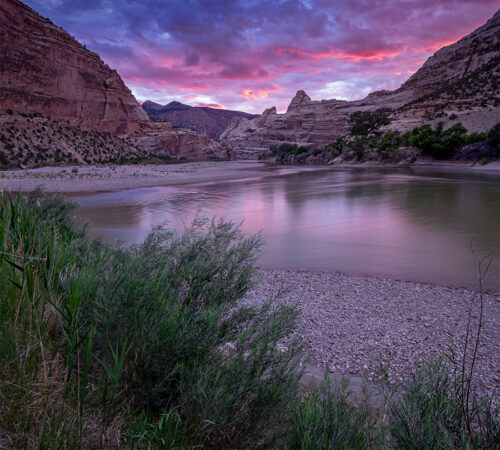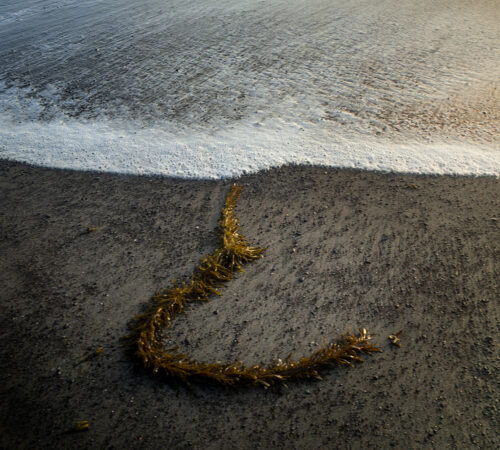Framing Our Emotions

Dear Bubbles:
Your book [So Said the River] describes how a series of traumatic situations helped you “discover—and live—my own big Life with a capital L.” These traumatic happenings had a strong impact on your emotional state of mind. Given that our emotional state affects the photographs we make, I’m interested in how you think these traumas affected your photography and if your photography changed as a result of your discovery of your own big Life?
~Jon
[NOTE #1: This question, along with several other similar ones, came up in the recent webinar “So Said the Author: A Conversation with Colleen Miniuk” moderated by Guy Tal. If you’d like to see that entire discussion, please visit https://youtu.be/YV1S7WzX0SM?feature=shared.
NOTE #2: Sincerest apologies to all readers for the week delay in this post’s release. With everything going on with my book’s release, I messed up my dates and schedule. But hope you still enjoy the read!]
Dear Jon,
Photographic expression, like pie, comes in many flavors. Renowned photographer Minor White suggested there were four different categories in which an image falls:
- Informational (most objective): An objective record of objective fact. The photograph shows “This is—and here is—how the camera saw it.”
- Documentary (representational, objective): A personal report of a fact or situation, done as objectively as possible. The photograph suggests “I was there—and this is what I saw.”
- Pictorial (creative, subjective): A subjective interpretation of an objective fact (the subject matter). The photograph conveys “I saw this—and here is how I feel about it.”
- Equivalent (creative, most subjective): Subjective state of mind embodied in an object (the photograph). The photograph expresses “I feel this—and here is a symbol for my feeling.”
One category is not better than the others. White’s explanation simply shows how and why we photograph is as important as what we photograph—and that there are infinite right answers and valid reasons to photograph as we do.
When I first picked up a camera in 2001 (which occurred prior to learning about White’s categorizations), I thought the whole point of nature photography was to stand in front of a pretty scene, wait for fiery color in the sky, and record the moment exactly as I—and my camera—saw it. In other words, I aimed to stay as true to what I saw as objective “reality” as possible. In hindsight, I was documenting the landscape (which falls in White’s #2 bucket).
To do so, I photographed the landscape most often with my widest-angle lens. During my first photography class at the Chandler-Gilbert Community College in 2001, my instructors gave their students ample space to explore and experiment on their own. They did not dictate (thankfully!) what types of subjects we were to photograph or what lens to use. I naturally gravitated to using my 24mm lens most frequently—until 24 mm just wasn’t wide enough (a declaration I made in late 2009). Then my favorite lens became my 14mm lens. That broad perspective conveyed exactly how I saw the world and the kinds of photographs I wanted to share with the world. I called myself a wide-angle lens addict.
Over time, this wide-angle, broad scenic, documentary, “I was here” approach became less and less fulfilling. Starting in 2013, after getting bored with my photography, I learned about the extensive creative opportunities photography could offer. By learning about the creative process, I discovered that I could use photography not just for objective depiction (image “taking”) but also for subjective interpretation (image “making”) and as a vehicle for self-expression, that I could intertwine what I experienced in the landscape with my emotions, thoughts, and ideas. My work moved into White #3 and #4 categories (and by this time I was familiar with White and his teachings). I became much more connected with both the outer and inner landscapes—and certainly more fulfilled. But I remained a wide-angle lens addict.
Then life—and my photography—abruptly changed in April 2015.
Facing the unexpected and devastating end of my 14-year marriage, among other things, I suddenly could not make a wide-angle landscape image to save my life. I stood paralyzed in front of a gorgeous landscape scene and for the first time, I could not figure out any sort of viable composition. In fact, I made precisely zero frames during my week-long visit in Moab, UT—one of the most scenic locales in the Southwest—a month after my life’s left-hand turn.
I panicked. I didn’t know what to do or how to handle such an abrupt and jarring shift. I was losing the life I had planned and worked so hard for AND now it seemed I was also losing my photo mojo. I had to do something! My first inclination was to try as hard as possible to get my life, my photography, back to normal (i.e., what it had been before my split). I responded with anger, frustration, fear, and heaps of negative self-talk.
As I became overwhelmed by uncertainty, my world became very small. I started making a ridiculous number of macro images instead of wide-angle images. Not necessarily on purpose. The smaller things are just what I began observing. In hindsight, I think the world around me was just too overwhelming for me to try to take a broad landscape and arrange something meaningful within my frame with a wide-angle lens. My photography approach was a mirror to my life events: instead of trying to follow five-year, ten-year, or even life-long plans (which had changed entirely after my separation), my focus shrank to what I could handle. I focused on one decision, one moment, one day at a time to navigate through the scary unknown.
My images from 2015-2017 tended to reflect dark, shadowy, and isolated subject matter and scenes with either heavy blue hues (which conveyed my sadness and coldness) or red hues (which conveyed a sense of rage and destruction and the trigger of a fight or flight response). Another thing I started noticing is that my life events influenced my frame orientation in an inverse way—and this is still true today. When my life is bonkers and stressful, I tend to express more horizontal images. Horizontal orientation gives off a more peaceful, stable vibe. Conversely, when my life is calm and less stressful, I tend to use vertical orientation, which carries more visual tension and drama. I’d call it a yin-yang balance. From 2015-2017, the majority of my images appeared horizontally.
For example, in assessing my collection of 1927 images from my visit to Acadia National Park in Maine in October 2015, an overwhelming number of my frames are horizontal and contain foggy small scenes with isolated subject matter, crashing waves, and red stormy light. Sure, one could attribute this to the conditions I witnessed at the time. More so, though, the filter in which I saw the world and the things I noticed were directly influenced by my traumatic life events. I could have just as easily noticed the delicate purple asters of late summer, the green lily pads, or the sun bursting onto the morning horizon (all of which would have yielded calmer-feeling images). But I didn’t. As Anais Nin said, “We don’t see things as they are, we see them as we are.”
After my Lake Powell paddle in November 2015 did not go according to plan (which is a trip I took to cope with my life not going according to plan…), I realized that striving to go back to the life I had was exhausting, unproductive, and in many ways, no longer an option. Honestly, I couldn’t stand being around myself with all my overachieving, perfectionist, destructive behaviors—and trust me, it’s incredibly difficult to run away from yourself. I’ve tried.
When I realized I had to live with myself in my unforeseen solitude—and didn’t particularly like where it was heading—I started defining what I refer to in the book “my own big Life with a capital L.” This concept evolved out of a conversation I had with my dear friend and fellow photographer Guy Tal in Moab in April 2015. I describe it on page 69 of my book as “Living free of expectations. Living beyond the meaningless minutiae. Living one moment at a time through curiosity and conviction. Living without fear of the future. Living deliberately according to one’s own principles and desires. Living a life from which one doesn’t need an escape. Truly living.”
I realized shortly after the end of my Lake Powell trip that I had found my own flow with photography after getting stuck in 2013 and that what I learned in that process could be applied to my own big Life (a discovery I describe in chapter 15 in the book). From there, I started actively challenging my life-long beliefs about perfectionism, societal and personal expectations, and the illusion of planning and control. Instead of sitting in grief and victimhood, I learned how to embrace a “going-with-the-flow” mentality which was guided by curiosity and fueled by nothing more than the courage to keep paddling no matter the obstacles and uncertainty. I paid closer attention to the thoughts in my head and carefully curated external voices before they gained any space in my brain.
In late 2017, my brain flipped a switch, though not through any intentional effort of my doing. Suddenly, while standing on the shores of Little Long Pond near Acadia National Park in Maine, I picked up my wide-angle lens and made a broad frame of fleeting light through the fog, glorious fall colors, and a mirror-like reflection. I can’t say for sure what happened or why it happened, but looking back, I’d like to believe that my efforts in accepting my situation for what it was (vs. fighting for it to be a different way), becoming my own biggest fan and cheerleader (vs. talking so cruelly to myself), and defining success as the courage to try (vs. the need to achieve) had finally paid off. From 2017-2021, I happily photographed wide-angle AND macro scenes with more ease and delight. My mojo had returned! Man, did that feel good.

Then life—and my photography—changed abruptly again in September 2021.
Without giving away any spoilers to those who have yet to read my book, I experienced another traumatic loss (after a series of other painful events like my cat dying, my dad almost dying, and the upheaval to my business during the COVID-19 pandemic). My world and ability to handle outside influences shrunk again. I couldn’t make a wide-angle landscape image. Again.
Except this time, it was a familiar feeling. Instead of getting frustrated, pissed off, and scared as I had done in 2015, this time, I knew how to handle the emotional fallout of grief better. Instead of believing I had lost my mojo again, I welcomed the change with curiosity and openness—my mojo was just evolving, that’s all. I released judgment and expectations and replaced them with awareness, understanding, and acceptance. Things weren’t bad or good. They just were. And I photographed whatever and whenever I felt like it without chastising myself about my decisions or demanding results, let alone perfect ones.
What transpired in my photography by “going with the flow” in life was remarkable. For the first time, I started seeing the middle ground—not too wide, not too small, but everything and anything in between. I began making intimate landscapes with more telephoto lenses. I intentionally incorporated new narratives of light and dark such that the balance of light and shadow in my images changed. My colors changed to more greens and yellows which conveyed peacefulness and hopefulness respectively. My frame orientations changed to vertical.
I made the image at the top of the post in April 2022 while camping along the Dirty Devil River near Hite, UT (which was near the start of my Lake Powell trip in 2015). I intentionally positioned the illuminated tree—which symbolized hope and joy—on the corner of the frame to express a sense of emerging from challenges—which the shadowed cliffs represented. In other words, it was suggesting that I was choosing growth over banging my head against the wall over and over again.
I truly believed for 40 years that everyone lived a perfect life, that no one had problems, and as a result, I should strive to also live a perfect and problem-free life. It turns out pain and suffering are universal human conditions. No one gets through life without experiencing some form of loss and grief. To avoid or suppress this reality, I’ve learned, is futile—and that’s coming from a person who hid her true emotions behind a façade of perfectionism for four decades. To accept, acknowledge, and even celebrate all that comprises our own existence is the ticket to our freedom.
As I wrote in the Epilogue of my book, “The waves of life don’t stop. No one can say why the universe chooses us to endure the tumultuous whitewater we do, but it does. If we rise to the challenge as the waters rise, if we push off these shores seeking growth and meaning, we get more resilient at navigating them.”
I found that photography offered an incredibly productive channel to explore, process, express, and cope with complex emotions. I also poured my feelings into my writings (i.e., the book) and paintings (something I picked up around 2021). After all, creativity and expression know no limits.
Don’t get me wrong, I still love my wide-angle lens! But my life experiences have expanded my ability to see, interpret, and convey the world around me. Photography can offer so much more than a creative or documentary outlet. Our cameras can come along with us on our ride to help us record and share the meaningful moments of our life’s journey. We can communicate and share the meaning of these moments by using lines, shapes, light, colors, relationships between elements, and a host of other perception-driven visual language and photographic techniques at our disposal. Together, these things can help us tell the story of our own unique lives—the joys, the pains, the serene, the chaos, the awe in all senses of the word, and everything in between.
Of course, if we have any hope of conveying the moments and meaning of our life outwardly, it means we must be willing to see, perceive, and feel inwardly first. To do so requires you to be brave enough to face yourself, to honor your authenticity, to own your own truth, and to live your own big Life with a capital L. After all, as Ansel Adams said, “Every man’s work is always a portrait of himself.”
So give this some thought: where you are in your life? How would you frame your emotional state? What do your photographs say about you and where you’re at in your journey on Earth?
Be well, be brave, be wild, and most importantly, be YOU. Long live Team Chaos!
~Bubbles
P.S. To get specific tips about how to photograph through hard times, please read my earlier post about “Adjusting for the Blues” at https://dearbubbles.com/2022/07/adjusting-for-the-blues/
If you liked this post and others like it, please consider supporting Dear Bubbles either through a monthly contribution through Patreon or a one-time donation through Buy Me a Coffee. Learn more about both at https://dearbubbles.com/support.
Have a question about photography, art, and/or the creative life? Need some advice? Looking for inspiration? Send your question to Dear Bubbles at colleen@colleenminiuk.com to be possibly featured in a future column post. (If you’d prefer a different display name than your real first name, please include your preferred nickname in your note.





One Comment
Jon Fleuchaus
Hi Colleen:
Wow! Thanks for devoting so much time in answering my somewhat simplistic question. In laying out all the complexities in how your emotional state affected your photography you gave me much to think about. Jon